The Infinite Light of the 2025 Ramadan Pavilion
Designed by Architectural Designer Fatima Mejbil and Artist Zarah Hussain
'Infinite Light', a new site-specific sculptural artwork was unveiled in Centenary Square Bradford to mark the holy month of Ramadan. Commissioned by Bradford City of Culture and the Ramadan Tent Project, the artwork responds to the theme of ‘Connection’ and has been designed by Architectural Designer Fatima Mejbil and Artist Zarah Hussain to appeal to all communities in Bradford. The duo wanted the pavilion to “invite people to come closer, explore, and experience the space in a way that feels intimate yet expansive.”

Featuring an electric pink and teal double-archway structure, the pavilion takes inspiration from Bradford’s rich architectural heritage. Mejbil was “immediately drawn to City Hall, a beautiful Gothic Revival building that stands proudly at the heart of the city,” with the almost golden sandstone of the Hall providing a perfect backdrop for the punchy pink of the pavilion. The idea for the double-arched form “emerged naturally” for the design duo, taking inspiration from both Gothic and Islamic architectural influences. The proportions of the main arch above Bradford City Hall’s doorway are echoed in the pavilion’s upper arch, while the lower arch draws from “the early courtyard arches of the Holy Mosque in Mecca, as depicted in 18th-century European prints”.
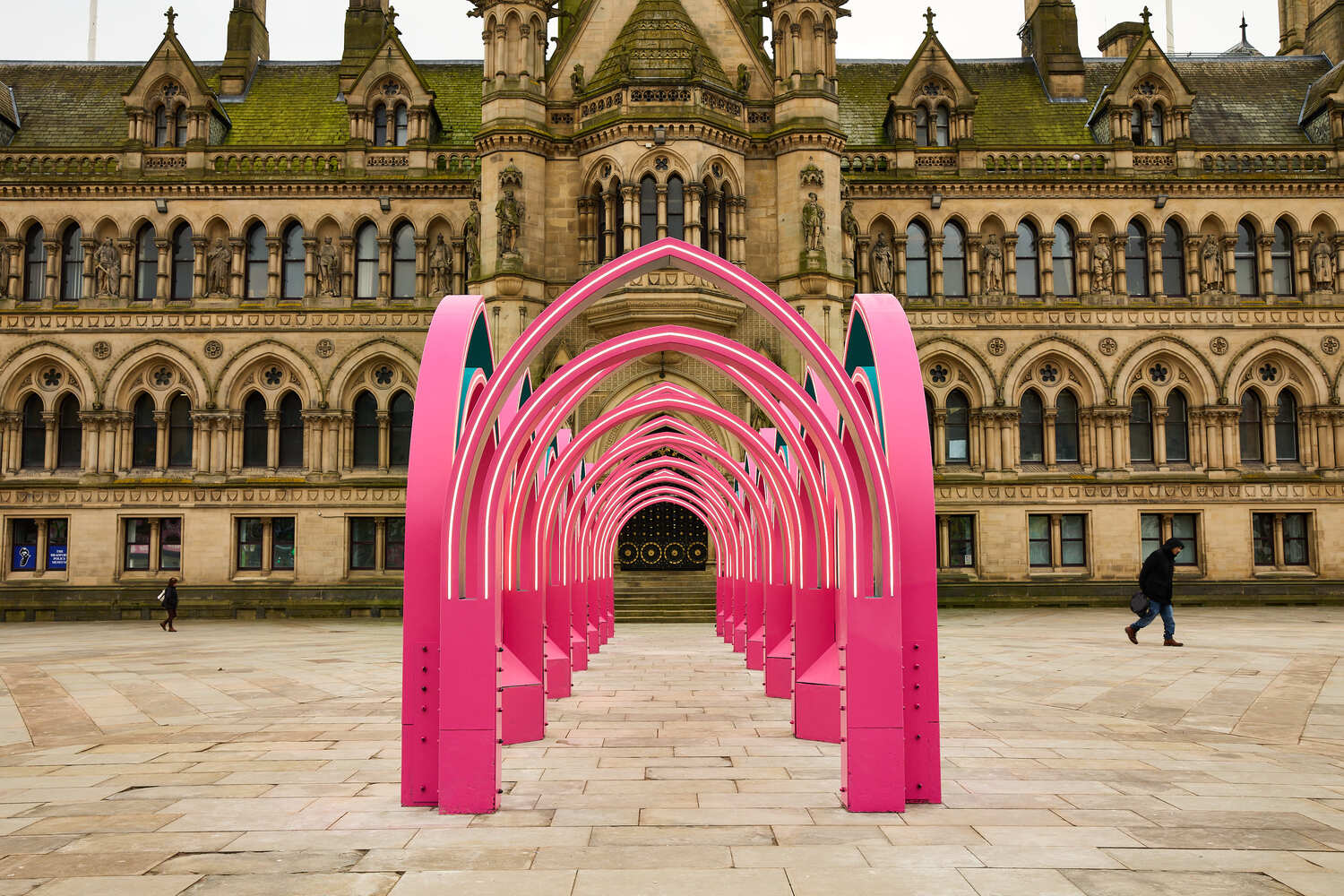
This layering of cultural references perfectly ties into the theme of “Connection” between architectural styles, cultural traditions, and the people of Bradford, with the arch itself serving as a “timeless symbol of connection, bridging spaces and people.” Zarah Hussain also noted that “the idea of infinity, of something that goes on forever - larger than you can even comprehend - is a key concept in Islamic Art,” with the double arch structure creating an optical illusion of infinity.

The incorporation of light is another key part of the pavilion’s design, with the arches being lit up at night starting at sunset (Maghrib), marking a direct connection to Ramadan and fasting. This lighting choice also ensures the pavilion’s vibrant presence in the heart if the city can be visible throughout the day.
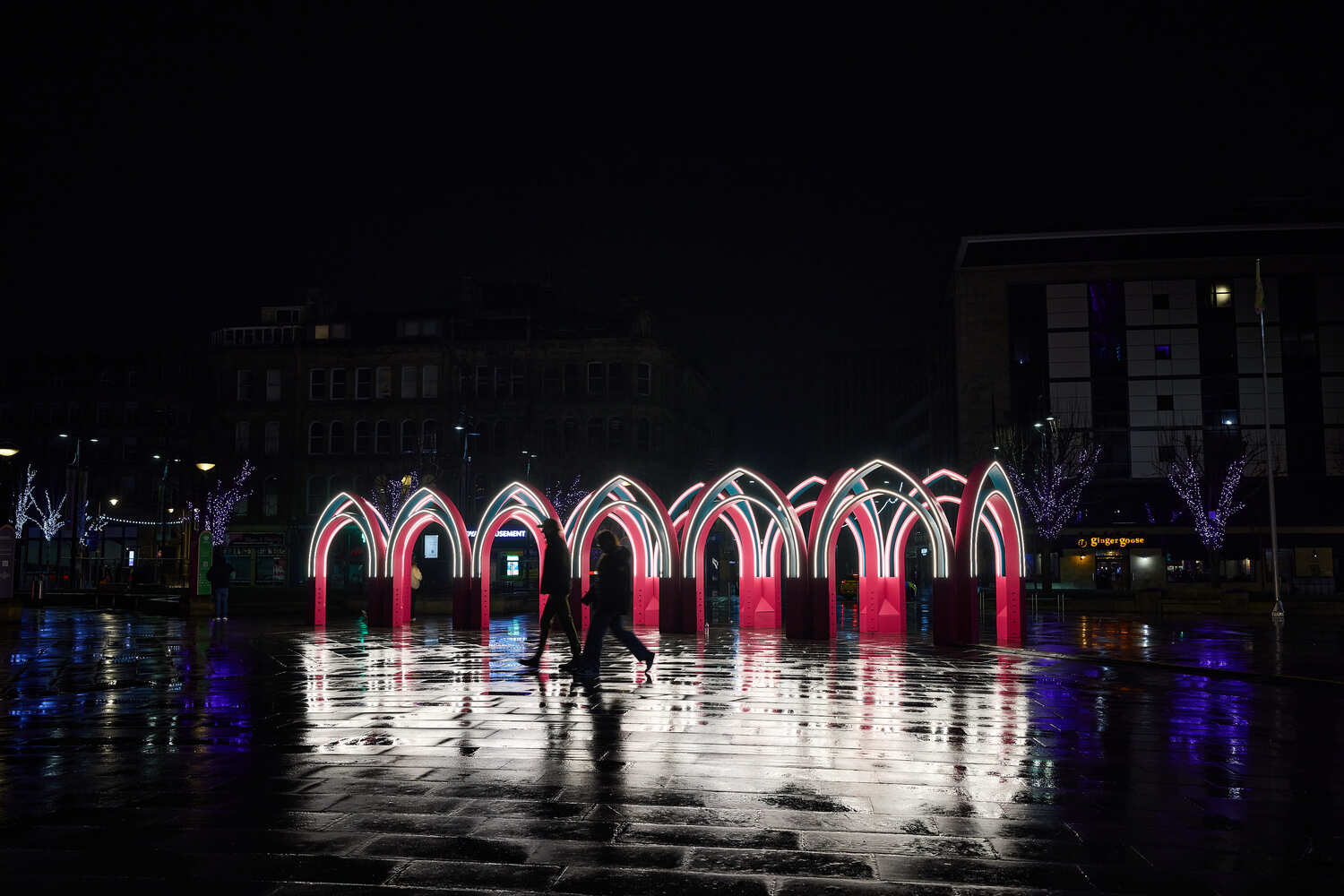
Adding to that sense of vibrancy is choice of pink for the pavilion. Speaking on the inspiration for the colour, Hussain said “I wanted the colours to be vibrant and stand out at what can be a dull and rainy time of year. I knew at nighttime the sculpture would be unmissable when lit. I wanted something similarly spectacular during the daylight hours. To me pink is a colour that represents serenity, love, and peace. It is not a colour often associated with Islamic art or Venetian Gothic architecture, so it a way of making something unusual, different, and beautiful at the same time. Lastly, the colour pink is associated with women, and I want to draw attention to the fact that two women are designing this Pavilion in what is a very substantial, masculine space.”

Mejbil noted that “Ramadan is a time of celebration, and across cultures, it is associated with rich colours. We wanted the pavilion to capture that festive energy, especially during a time of year when Bradford’s winter skies can be quite grey. For me, the colour choice reflects the shifting tones of sunrise and sunset—the warm pinks, and cool blues that fill the sky at these times. The pink shade we selected felt contemporary yet vibrant, creating a striking contrast against the historic backdrop of City Hall. The colours also interact beautifully with the lighting design, making the pavilion feel dynamic throughout the day.”
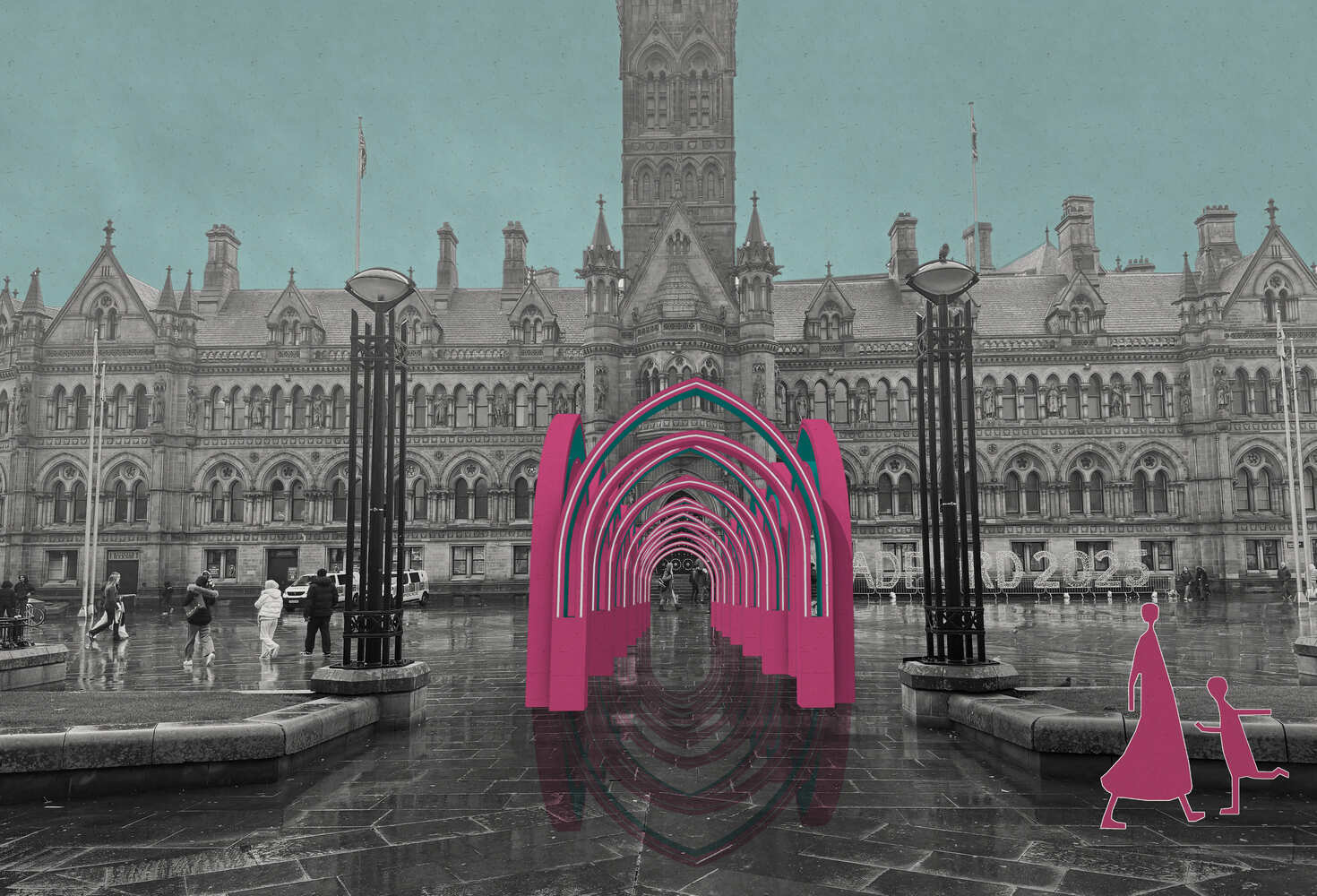
The pavilion stands as a bold celebration of connection and culture, and for Mejbil “it becomes a symbol of unity and a place of reflection for all… In this pavilion, the arches draw people from all directions, creating a space that encourages contemplation of togetherness and connection. It is a space that invites individuals to pause, reflect, and re-engage with the world around them, whether through the shared experience of walking through the pavilion or the deeper cultural and spiritual connections it evokes".
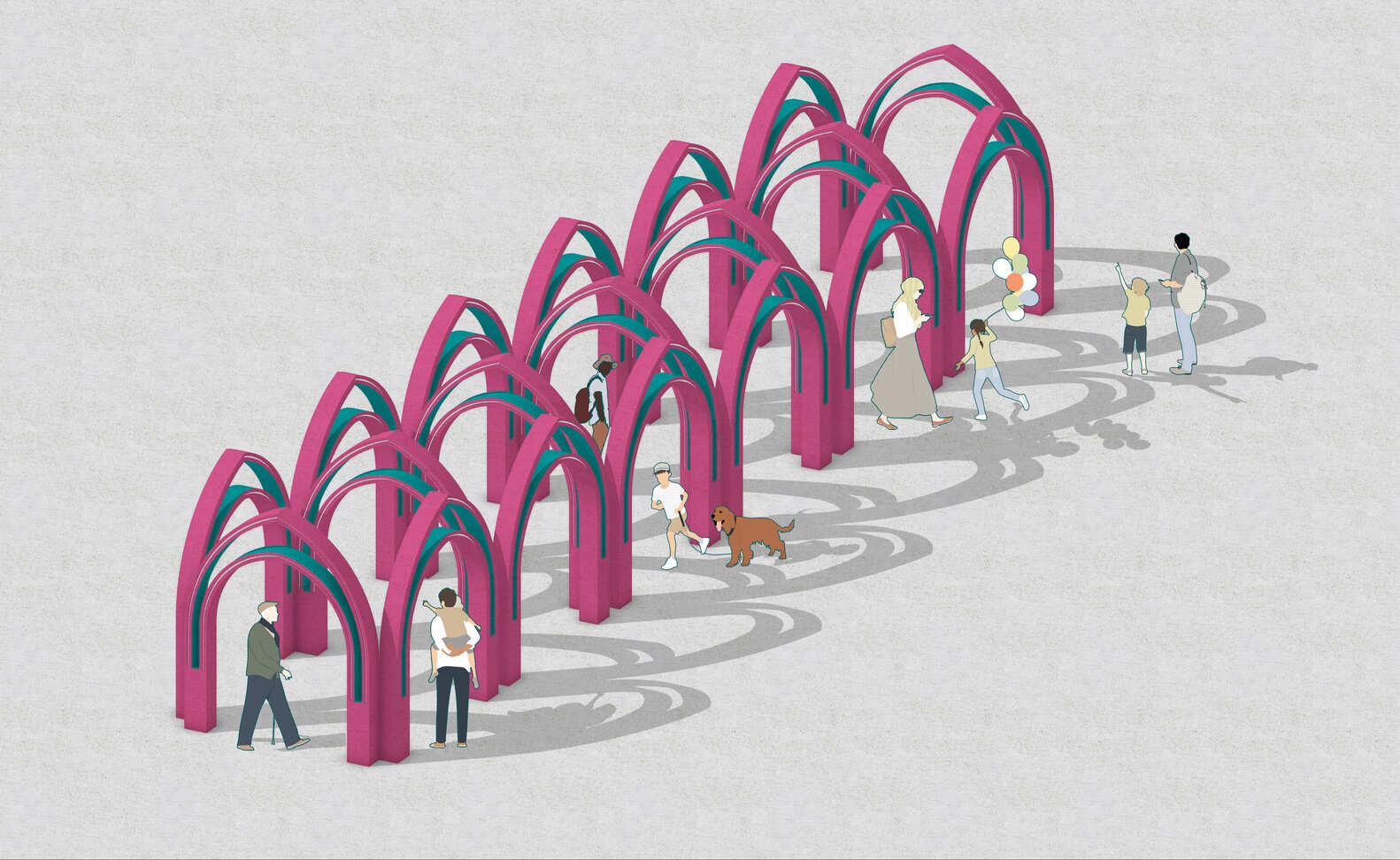
That spirit of connection continues through the design partnership between Fatima Mejbil and Zarah Hussain, the pair finding crossovers between their different disciplines during the collaboration process. Hussain notes that “although we come from completely different disciplines, I found that we both have a tendency to visualise and conceptualise ideas in a geometric way. It was a real pleasure, and I think we were able to combine our ideas quite easily.”
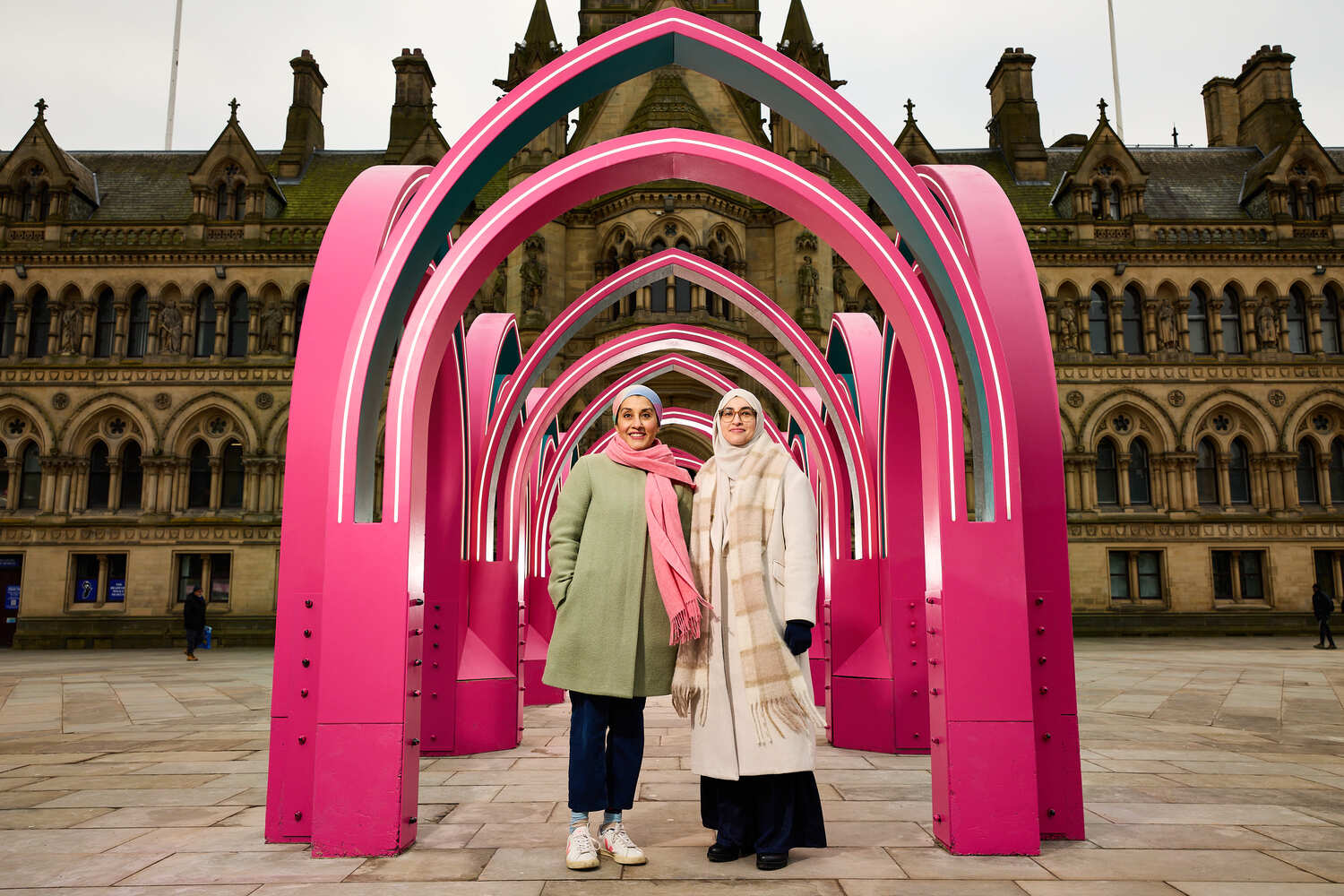
Mejbil found that “Zarah’s deep research background brought new perspectives to how we approached this installation… We wanted a design that felt inclusive and reflective of the community around it. Our collaboration was about finding the right balance, honouring heritage while making something fresh and contemporary. The fusion of geometric and spatial design was seamless, and I found it incredibly rewarding to work across disciplines to bring this vision to life.
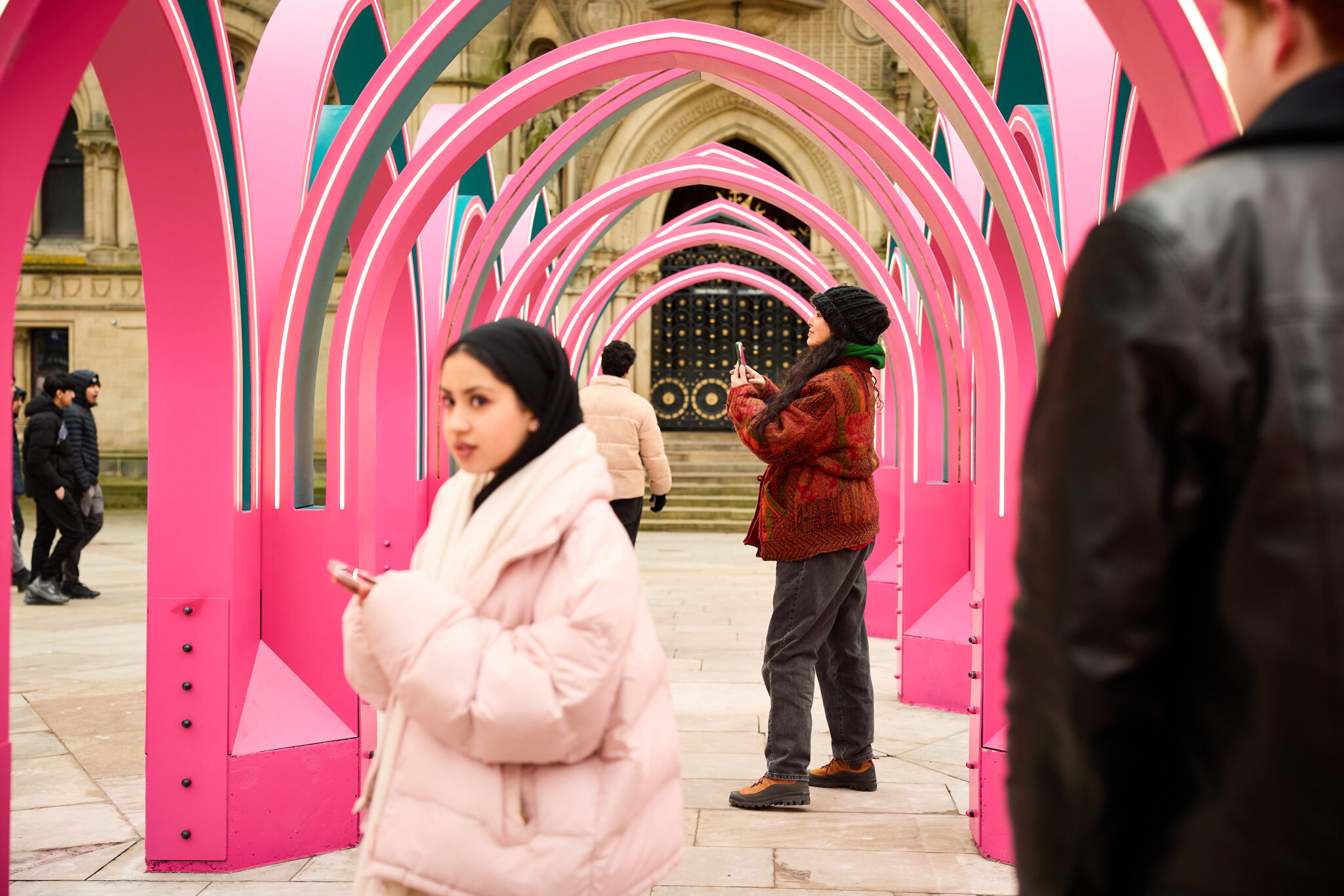
With the 2025 Ramadan Pavillion, Mejbil and Hussain have brought ‘Infinite Light’ to the city of Bradford. As Mejbil put it, the pavilion is a space where “people can pause and reflect, a place that encourages people to appreciate the beauty of their surroundings, both in the day and at night. The lighting, the colours, the form, everything is designed to create an experience that feels fresh and meaningful each time you encounter it. Ultimately, we want people to feel a sense of joy and connection when they pass through Infinite Light. I hope it serves as a reminder that even in a busy, bustling city like Bradford, there’s always an opportunity to pause, reflect, and find unity in our shared spaces.”